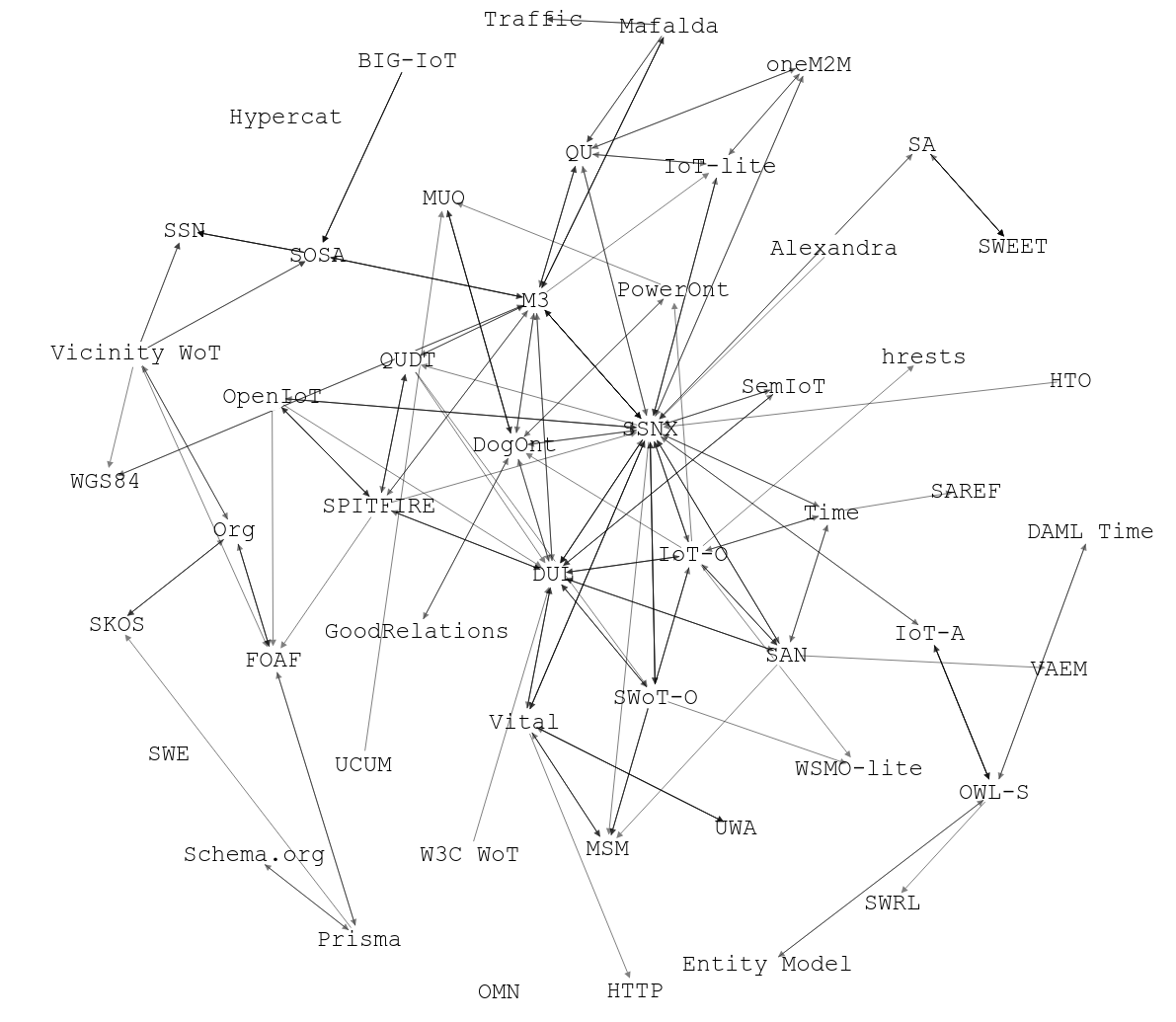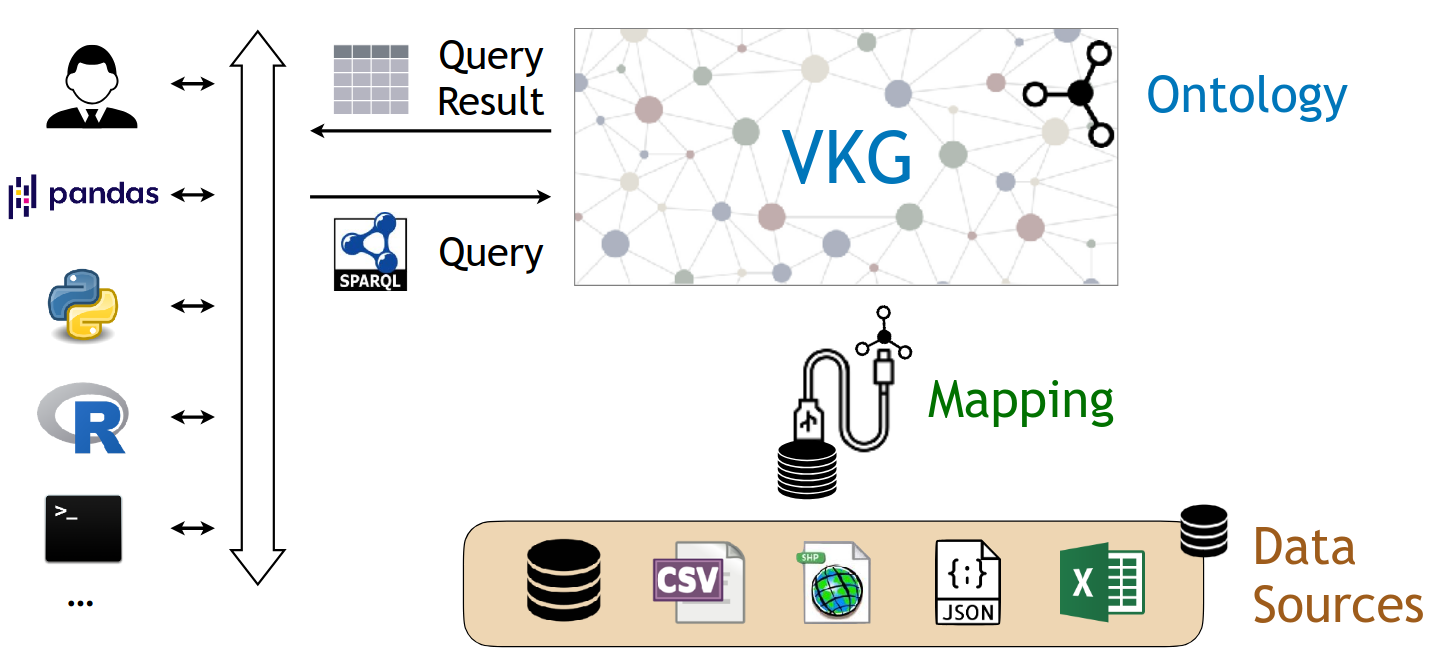Web Ontologies
Outline
- Ontologies
- Open and Closed Worlds
- The Web Ontology Language (OWL)
- Ontology Alignment
- Beyond OWL
Onto…?
Philosopher: an ontology is a theory of what is.
Aristotle stated that all things belong to one of ten categories.
Some of his contemporaries agreed with his theory, others disagreed.
Computer scientist: an ontology is
a specification
of
a conceptualization.
Computer scientist: an ontology is
e.g. a formal description
of
concepts and relationships.
SUMO, BFO or DOLCE are examples of ontologies aiming to capture all known concepts.

Ontology engineer: an ontology defines the vocabulary with which queries and assertions are exchanged among agents.
That is, ontologies are specifications of shared conceptualizations.
Agreement across all humans over a common ontology is not reachable, though.
Partial agreement over small sets of concepts is much more realistic.
Web researcher: a Web ontology is a consistent set of concepts exposed on the Web, such that others can (partially) reuse and align with these concepts.

Web ontologies are commonly layered as:
-
Upper-level ontologies
SUMO, BFO, DOLCE, … -
Domain ontologies
for manufacturing, social networks, art, … -
Application-specific ontologies
Open and Closed Worlds
If anyone can publish their ontology on the Web, they must decide what to do with the unknown.
One cannot assert all what is true with a finite vocabulary.
The designer of an ontology must define its frame:
- what is within the frame is known for certain
- what is outside the frame is unknown
The two possible treatments for unknown statements are:
-
the Closed World assumption
what is not stated is false -
the Open World assumption
what is not stated is undefined
Constraint satisfaction
is typically done under the
Closed World assumption.
Whatever is valid in a closed world remains valid in an open world.
Inference
is typically done under the
Open World assumption.
Whatever is inferred in an open world remains inferred in a closed world.
Ontologies should be:
- easy to extend
- hard to validate
Ontology engineers should therefore design ontologies under the
open-world assumption.
The Web Ontology Language (OWL)
The Web Ontology Language (OWL) is the reference language to define ontologies.
Declaration( Class( :Person ) )
Declaration( ObjectProperty( :knows ) )
Declaration( DataProperty( :familyName ) )
Declaration( DataProperty( :birthDate ) )
SubClassOf( :Person
ObjectAllValuesFrom( :knows :Person ))
SubClassOf( :Person
DataSomeValuesFrom( :familyName xsd:string ))
DataPropertyRange( :birthDate xsd:date ):Person a owl:Class .
:knows a owl:ObjectProperty .
:familyName a owl:DatatypeProperty .
:birthDate a owl:DatatypeProperty .
:Person rdfs:subClassOf [
a owl:Restriction ;
owl:onProperty :knows ;
owl:allValuesFrom :Person
], [
a owl:Restriction ;
owl:onProperty :familyName ;
owl:someValuesFrom xsd:string
] .
:birthDate rdfs:range xsd:date .Class: Person
SubClassOf: knows only Person
SubClassOf: familyName some string
ObjectProperty: knows
DataProperty: familyName
DataProperty: birthDate
Range: dateOWL includes:
- all of RDF Schema
-
class combinations
union, intersection, complement -
property characteristics
transitivity, symmetry, inverse, … - property chains
OWL also includes so-called restrictions, including:
- existential restrictions
- universal restrictions
- cardinality constraints
For an introduction to OWL, see the OWL quick reference document.
Reference documentation also includes the OWL 2 Primer and the Manchester syntax quick reference.
Ontology Alignment
Class: foaf:Person
EquivalentTo: schema:Person
Class: foaf:Image
EquivalentTo: schema:ImageObject
Class: foaf:Document
SubClassOf: schema:CreativeWorkOntology-based data access (OBDA) is a common approach to data integration. It generally requires inference from alignment axioms.

Beyond OWL
For practical use, several OWL profiles exist:
-
OWL QL
for OBDA, among others -
OWL EL
with applications in the medical domain -
OWL RL
for implementation with a rule engine
Yet, OWL is not a universal ontological language.
For instance, it is not possible to express such things as:
- Job interviews for the same position are always followed by at least one hiring event.
Rule languages, such as SWRL, can express ontological constraints that OWL cannot. And vice-versa.
Mixing arbirary OWL axioms and rules is powerful but inference is not guaranteed to terminate.
Predicate logic is (assumed to be) the most universal language.
Common logic is an international standard to define ontologies in predicate logic.
See Introduction to Common Logic by John F. Sowa.